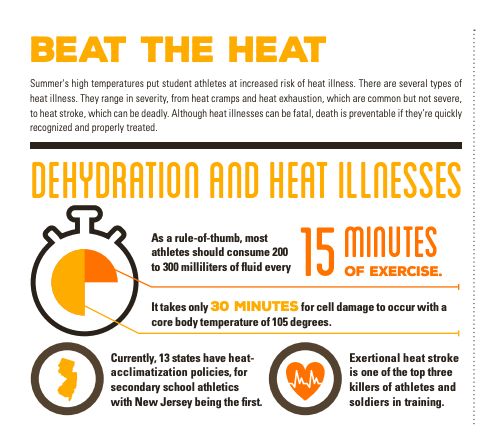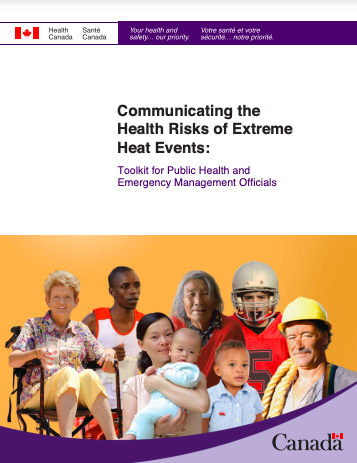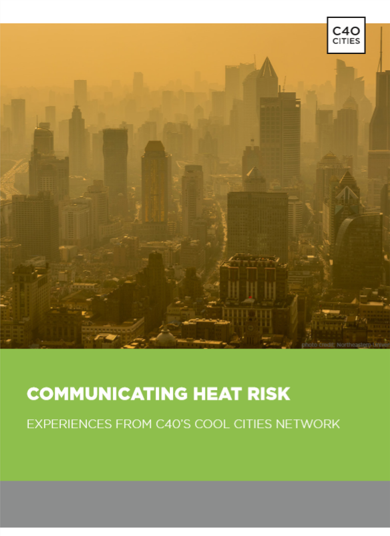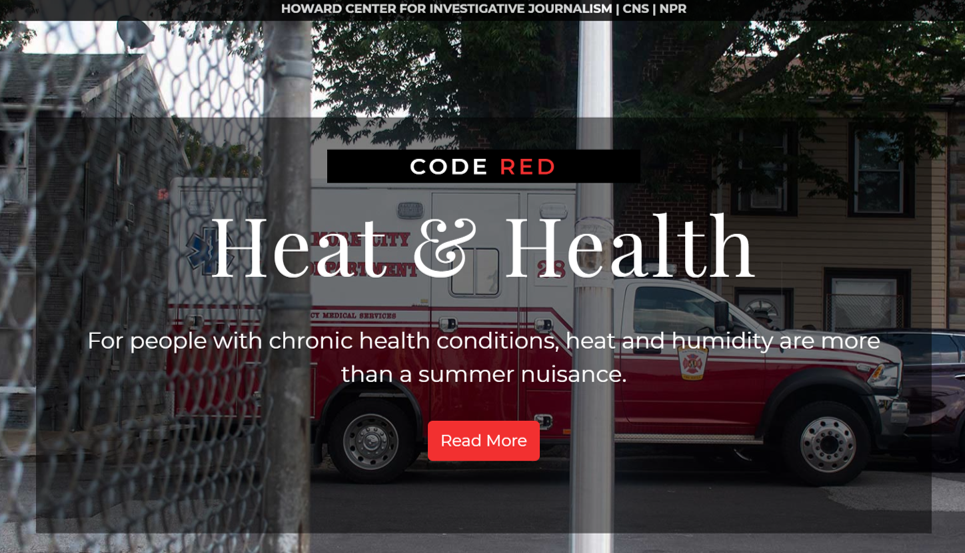Extreme heat is an invisible disaster. Increased awareness of the immediate and future dangers of heat and how to deploy available solutions is urgently needed.
A range of risk communication, awareness and advocacy strategies can help inform communities and decision-makers about how to reduce heat risks during hot weather and adapt society to a hotter future.
Risk Communications
Risk communication, such as heat advisories, alerts, warnings or watches, serve to alert people, businesses, governments and responders of dangerous conditions and what actions should be taken to protect themselves and those they may be responsible for.
Risk communication refers to the exchange of real-time localized and actionable information and advice between experts and people facing threats to their health, economic or social well-being.
Risk communication requires clear protocols of authoritative information, and may be regulated by government authorities. Communication channels from media and social media communications, mass communications and community engagement are commonly used to reach target audiences.
It requires a sound understanding of people’s perceptions, concerns and beliefs as well as their knowledge and practices. It also requires the early identification and management of rumours, misinformation and other challenges.
Examples and Resources
- Health Canada‘s Heat Communication Planning Guide
- Weather Ready Nation: Extreme Heat Communication Kit
- Chapter 5: Communicating Heat Health Warnings and Heat related information to stakeholders and the public (in Heatwaves and Health: Guidance Heat Health Warning Systems)
- HEAT-SHIELD Occupational Heat Stress Infographic Series
-
Risk communications campaigns around heat health are most effective when public health and emergency management officials:
- Identify and analyze the audiences and their needs
- Take a collaborative approach with stakeholders and government organizations
- Set clear goals and objectives that fit budgets and are logically linked to the campaign
- Choose effective communication channels and vehicles
- Develop risk communication products and materials tailored to specific audiences
- Build on existing health communication campaigns (e.g. emergency preparedness, public health)
- Offer programs and services to minimize barriers to action
- Follow critical timelines for effective heat-health
- Take into consideration needs of specific communities (e.g. languages, rural versus urban)
- Use pre-tested, consistent and scientifically sound heat-health messages
Adapted from WHO
-
Effective communication planning must begin well in advance of hot weather or an extreme heat event to positively influence behavioural change and to help the audience deal with dangerously hot weather. Extreme heat and health communication campaigns generally occur over three phases:
- Before the heat season: awareness campaigns focused on raising the audiences' curiosity about heat-health issues.
- During the heat season: Governments should provide the public with timely, consistent and accurate information to help them make informed decisions and change their behaviour to minimize health risks, such as drinking more water and going to cooling centres during hot weather. Many communities around the world have developed heat alert and response systems that encourage people to take actions to protect their health.
- During an extreme heat event: effective and rapid communication materials emphasizing only 3-7 bits of familiar information that audiences can/should remember.
-
Multiple, diverse channels and vehicles should be coordinated to distribute heat-health messages and to reinforce them. Partnering and engaging local media is important to establish credibility and ensure dissemination of consistent messages. Messages from mass/broadcast media can often blend into other channels of communication by stimulating discussion, especially if the campaign messages are presented as news rather than advertising (source). Visualizations and multimedia can be a useful tool to communicate heat risks to target audiences. When done well, visual storytelling is an effective way of engaging an audience and ensuring that messaging is easily digestible and memorable.
-
Risk perceptions and socio-economic factors may prevent people from changing their behaviours in the face of serious risks to health. These challenges include insufficient financial resources for air conditioning, lack of clean water or adequate shelter, inadequate skills and knowledge, limited physical ability, and certain views and beliefs (local preferences, accepted behavioural patterns).
Risk communication efforts have more chance of influencing behaviour when they are complemented by programs that remove barriers to action and provide opportunities for citizens to adopt coping strategies. For example, providing free bus tickets during extreme heat events will encourage people to go places where they can cool down. Interventions to overcome barriers to action should take into account the existing capacity of communities and partners. They should also address the need of target audiences and be based on service utilization, availability and accessibility of services, and stakeholders' perceptions of audience need (source).
It is also important to address contradictory messages for the public when extreme heat events happen at the same time as other public health emergencies or events, such as the case in summer 2020 with the coexistence of hot weather and the COVID-19 pandemic overwhelming health services in many countries. If heat health messages are telling people to go to public, air conditioned spaces while outbreak communications are telling people to stay home, confusion will lead to worse health outcomes overall.
-
Formal evaluation of heat-health communication campaigns are key to improve the impact of communication strategies and messages, and to ensure efforts are cost effective and appropriate for your audience. The evaluation plan should be simple and cost effective, and include the audiences, stakeholders, government and nongovernment organizations involved in developing and participating in the campaign. Engaging these groups and receiving constant feedback will ensure identification of common goals among stakeholders, realistic expectations of the campaign outcomes, and appropriate measurable indicators for use in evaluation.
Advocacy and Awareness
Cooked: Survival by Zip Code
Documentary films can provide informative testimony and accessible coverage of complex issues.
Preparing communities and governments to safely live in a warmer future calls for long term advocacy efforts to raise awareness of the need for climate change mitigation, effective energy and land use policy, social protections, and adaptive policies and measures that can be locally implemented.
Heat health advocacy should focus on removing barriers to action and strengthening capacity to act effectively before, during and after hot weather to protect the population.
Heat health advocacy may centre around:
- Changes in policies
(e.g. worker protections, building standards, funding for green space or cooling centres) - Changes in awareness, knowledge or beliefs
(e.g. information campaigns, communications plans, development of action plans and strategies clarifies roles) - Benefits to individuals or making action easier
(e.g. partnerships and protocols make it quicker and easier to respond to heat events and provide services to those affected) - Changes in service utilization
(e.g. changing timing, location, or subsidization of services to access most vulnerable)
Heat Awareness Communications Examples
Campaign
Photo Essay
Investigative Series
Investigative Series
Investigative Series
Investigative Series
University of Maryland’s Philip Merrill College of Journalism, NPR
2019



